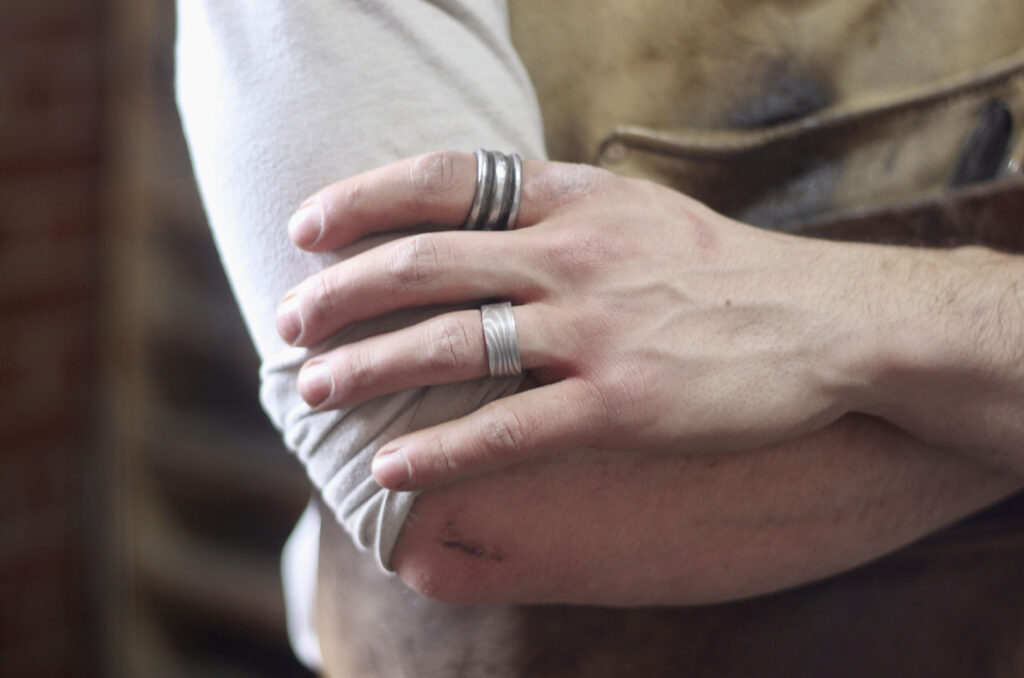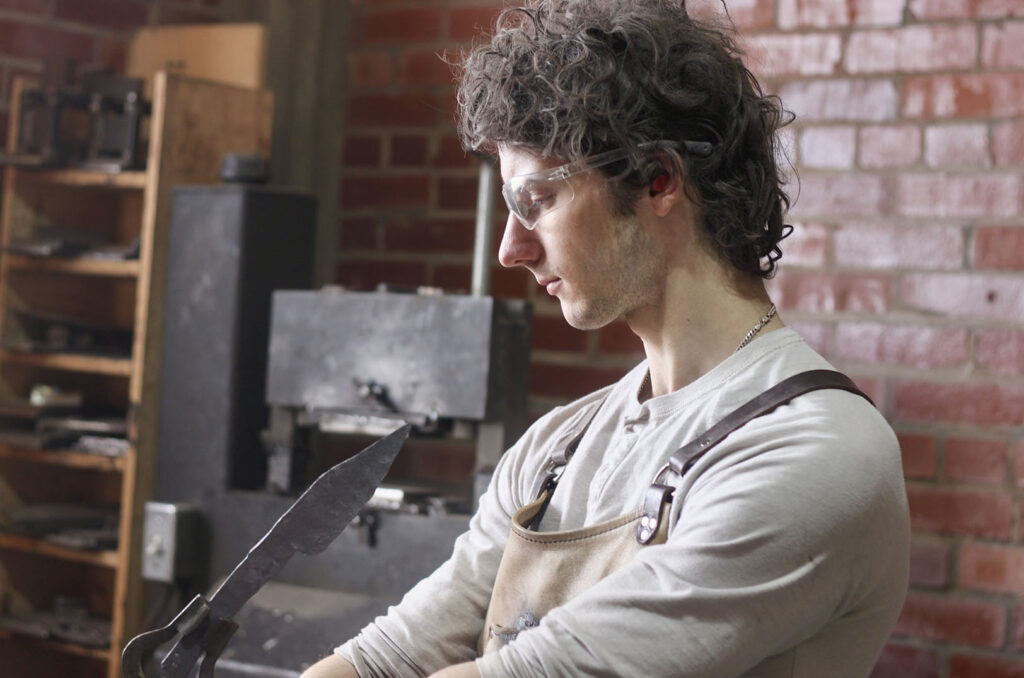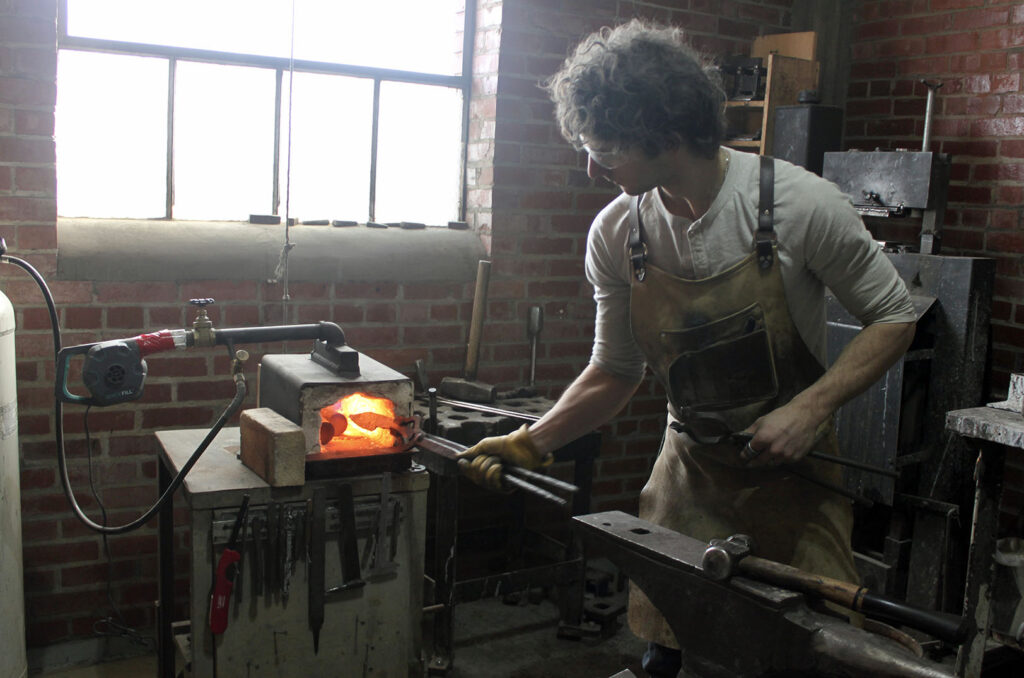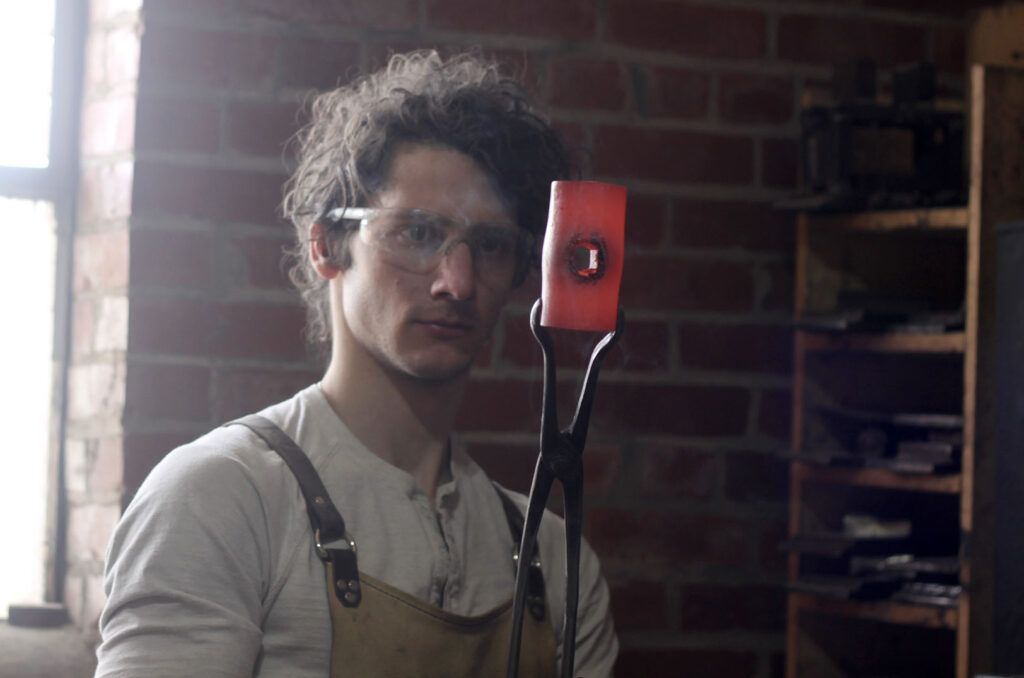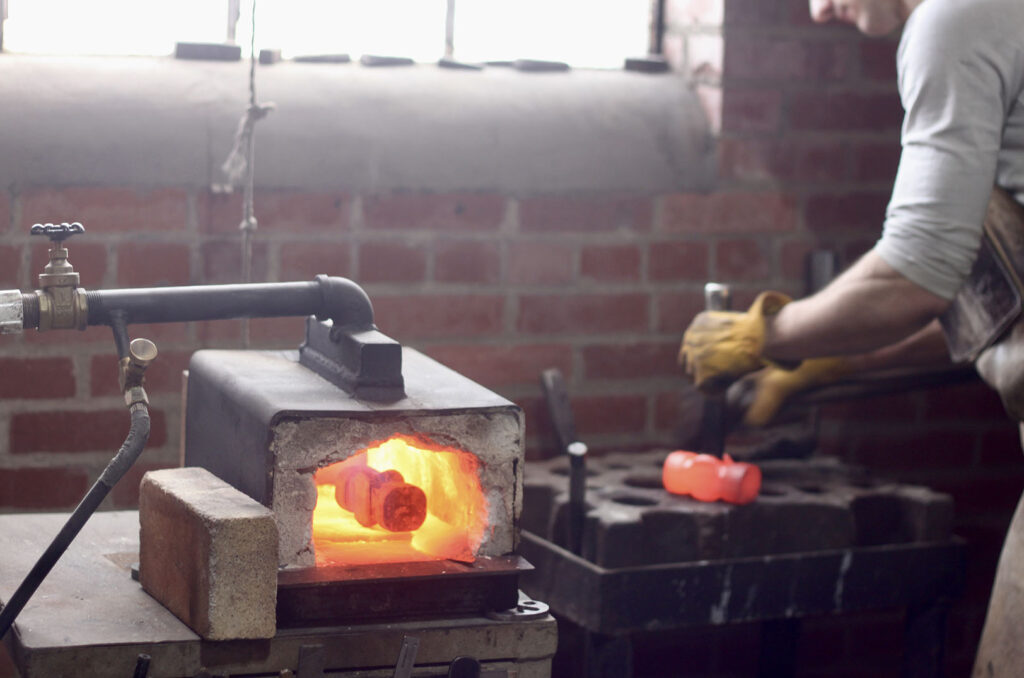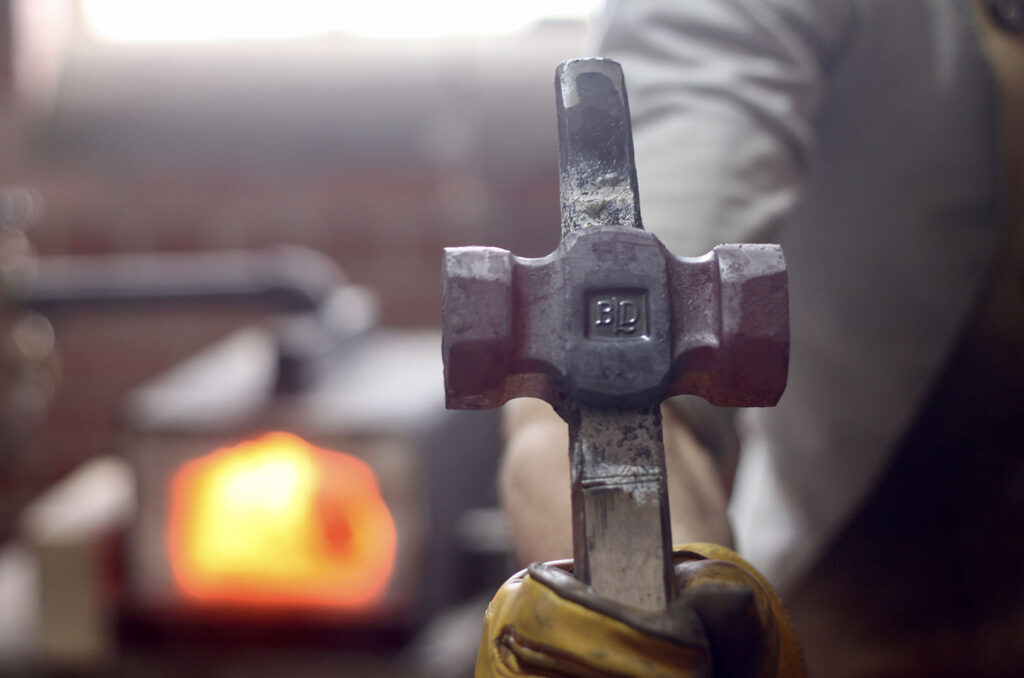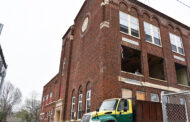A hand-forged knife introduced Brandon Dearing to blacksmithing; one also nearly cost him his life.
The Hand and Hammer owner now makes tools — such as tongs and a variety of hammers — for other blacksmiths, using forging techniques he learned as a youth growing up in the country near Archie, Missouri.
“TV shows and YouTube have made blacksmithing insanely popular right now,” Dearing explained. “So people that want to get into blacksmithing — but can’t forge their own tools — I will make them for them, essentially. I ship that stuff all over the world and all over the country.”
He also forges custom knives, jewelry, and furniture.
“It’s a jack of all trades blacksmithing approach,” he added.
It all began when he was 14 — looking for a way to keep his knives sharp, Dearing recalled. A master bladesmith that his father knew taught Dearing how to forge his own. At 18, he started his own blacksmithing business.
After his accident in 2019 — when a custom knife he was working on came within inches of killing him — Dearing pivoted to specializing in blacksmithing tools (all stamped with his initials).
“I’ve always wanted to learn how to make my own tools,” he explained. “So I started watching classes on YouTube about how to forge a hammer, things like that. And then I bought this machine here which helps forge a lot faster — a hydraulic press. I started throwing stuff on Etsy and Facebook Marketplace and I started selling more and more. Orders started coming in from different countries and people kept asking me questions about how to get into blacksmithing and everything, so that’s kind of been my main focus.”
Dearing — who works out of the makerspace at Swell Spark— hopes to move into a bigger space soon; he wants to start teaching in-person and online classes for those interested in learning the trade, possibly showing others how to make their own wedding rings like he did his own.
“I think in the future, mainly, what I want to do is inspire other people on how to become blacksmiths,” he continued. “It almost completely died out around the ’70s or ’80s, and now since YouTube and TV shows and everything like that, it’s becoming very popular again. So I think it’s really cool to be able to pay that forward because somebody taught me how to do this.”
Watch a video below of Brandon Dearing at work, then keep reading.
Where there’s smoke
Working with his hands comes naturally to Dearing: a third-generation craftsman. As a kid, he said, he started helping with his dad’s woodworking business — Woodbrooke — making high-end antique reproduction furniture. His dad also introduced him to working with metal, buying a forge and an anvil to start adding hand-forged iron elements to the pieces.
When Dearing turned 18, he recalled, his dad suggested he start selling his own work, so he rented a booth at First Fridays and he began offering furniture and other hand-forged iron items.
“I’ve kind of been in this handmade woodworking and metalworking my entire life one way or another,” he shared. “I’ve done jewelry. I’ve done silversmithing classes (and) leather working; so pretty much a little bit of everything.”
Although he has branched out on his own, Dearing still often collaborates with his dad.
“He and I have always worked very closely together,” he added. “He’s taught me most of the things that I know. … He’s one of the best in the country at what he does. He’s incredible at woodworking and metal work, too. So I help him a lot with his stuff, as well.”
Shaped by flames
Before starting to focus more on making tools and inspiring the next generation of blacksmiths, Dearing said, he spent a lot of time making custom knives. But that all changed on a cold November night in 2019.
Dearing fired up the forge to keep himself warm as he hand-sanded a knife in his dad’s shop in Archie, he recalled. The sanding process requires that the knife be locked in a vise and pointed toward the body.
“(Jason Burton), who taught me how to make knives, told me that was the most dangerous part of the entire process,” he explained. “Because if you forget that knife is there, it’s basically pointing at you and it’s like a giant razor. He knows someone that’s died from forgetting where it was.”
While sanding the knife, he forgot how close his back was to the forge and started to feel a little too warm, he recalled. That’s when he realized his back was on fire.
“I first rip all these clothes off and I can feel the shirt melting into me,” he said. “So I’m just ripping clothes off, throwing them everywhere. Then I realized, now that I’m no longer on fire, that the clothes that I was wearing were still burning, and they started catching the shop on fire.”
Dearing immediately became concerned about the propane tanks and other flammable items in the shop.
“My dad has lost his whole business once in a fire (in 2012),” he noted. “So I was determined I wasn’t going to let that happen.”
That’s when he realized he was going to have to go outside to find more water, he said, and forgot about the knife in the vise point.
“I ran into it so hard that it bent the side of the knife,” he continued. “It went through my arm and into my chest and stopped barely on one of my ribs. Had it not, it would have gone up into my lungs, into my heart, and killed me instantly.”
But the injury didn’t stop Dearing from saving the shop. With his adrenaline pumping, he said, he pulled the knife out, crawled under a barbed wire fence, and broke ice in the frozen pond to get more water.
Dearing ended up with 23 stitches and third-degree burns, forcing him to spend several intense weeks in a burn unit. His painful recovery process took about two months, he shared, but getting back to what he loves has helped him heal.
“A lot of people wondered if I was going to keep doing what I was doing,” he said. “But that didn’t really occur to me, actually, to stop. … After that, I knew I still wanted to be in blacksmithing. Because, one, it’s the only thing I’ve ever known; and, two, just something’s always drawn me to it. Being able to forge metal and shape it, there’s just a passion I have for it.”








